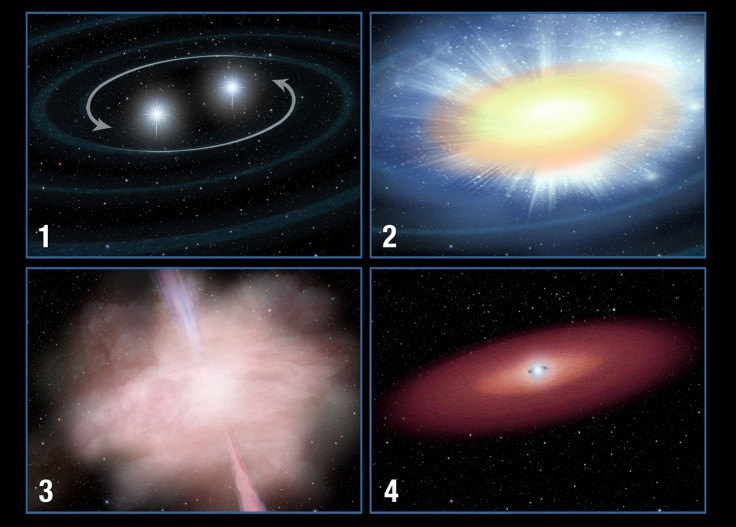Collisions Of Black Holes And Neutron Stars Can Ignite Cosmic Blasts That May Explain Origin Of Gold

Celestial mergers between black holes and super-dense neutron stars could produce short-lived gamma-ray explosions in space and can explain the origin of chemical elements such as gold and platinum, scientists said.
The latest discovery, which appeared in a special online edition of the journal Nature on Saturday, was made based on last month’s observations by NASA's Hubble Space Telescope. The Hubble detected a fading fireball from a new kind of stellar blast called a “kilonova,” an incident that was followed by a brief short gamma-ray burst, or GRB, in a galaxy almost four billion light-years from Earth.
Scientists said that a kilonova has long been predicted by astronomers to accompany a short-duration GRB but had not been seen until now. Such an explosion is so powerful that it can be 1,000 times brighter than a typical star explosion, called a nova. On the other hand, a typical supernova, the self-detonation of a massive star, could be 100 times brighter than a kilonova.
“Many astronomers, including our group, have already provided a great deal of evidence that long-duration gamma-ray bursts (those lasting more than two seconds) are produced by the collapse of extremely massive stars,” said Nial Tanvir of the University of Leicester in the United Kingdom, the study's lead author, in a statement.
“But we only had weak circumstantial evidence that short bursts were produced by the merger of compact objects. This result now appears to provide definitive proof supporting that scenario.”
According to scientists, gamma-ray bursts are strange flashes of intense high-energy radiation that appear from random directions in space. Short-duration blasts last only a few seconds, but they sometimes produce faint afterglows in visible and near-infrared light, which continue for several hours or even days. The afterglows have helped astronomers determine that GRBs lie in distant galaxies.
In a recent paper, Jennifer Barnes and Daniel Kasen of the University of California at Berkeley and the Lawrence Berkeley National Laboratory presented new calculations, predicting how kilonovas should look.
On June 3, scientists got an opportunity to test the new model when NASA’s Swift space telescope picked up an extremely bright GRB. From June 12 to June 13, Hubble searched the location of the initial burst and spotted a faint red object.
After an independent analysis of the data from another research team confirmed the detection, subsequent Hubble observations on July 3 revealed the source had faded away, proving that it was a fireball from an explosive event.
Scientists said that the new discovery is expected to shed light on the origin of many heavy chemical elements in the universe, including gold and platinum. According to them, kilonovas are predicted to form such elements in abundance, spraying them out into space where they could become part of future generations of stars and planets.
In addition, kilonovas are expected to emit intense gravitational waves, a phenomenon that has not been seen since it was predicted by Albert Einstein. But scientists believe that with new instruments under development, gravity waves could be detected within a few years.
© Copyright IBTimes 2025. All rights reserved.






















